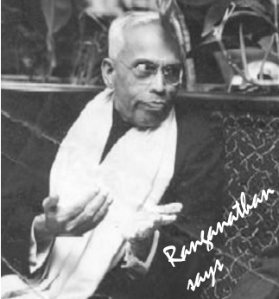Assumed Terms
In the description of scientific method, we shall use the following as assumed terms:
Know, Knower, Knowee, Knowledge;
Senses, Sensation or Perception, Observation, Experimentation;
Intellect, Association, Reasoning, Logic, Inductive Logic,
Deductive Logic;
Memory, Remembering, Recalling; Emotion, Feeling;
The mode of knowing with the aid of the faculties and methods mentioned in the last four sections is called Kartru-Tantra in Sanskrit. It means “Knower-Dependent”;
Intuition or trans-intellectual, trans-sensory, trans-emotional, and trans-memory mode of directly knowing a thing- in-itself.
This mode is called Vastu-Tantra in Sanskrit. It is said to be acquired by Tapas, a method of concentration, self-sublimation, and self-development; and it means “Knowee-Dependent”.
Emergence of Knowledge
When knower and knowee are brought into relation, the knower knows the knowee; and knowledge emerges. Knowledge is expressed in language or in some other medium; and expressed knowledge is stored in memory. The simplest mode of knowing is for the knower to perceive the knowee with the aid of one or other of the primary senses. This action may be called primary perception. Little is known about primary perception; perhaps it is ordinarily experienced only by the new-born baby. Soon after birth, association of the results of two or more simultaneous primary perceptions would take place. Each new perception will also be instantaneously and spontaneously and inexorably associated with what is already stored in memory. In due course, the mode of knowing goes beyond perception and association; it includes reasoning; and reasoning progressively gets more involved. Increasingly sharper and more powerful logic is used in the reasoning. In course of time, two classes of knowee come to be recognized – one outside the memory of the knower, and the other inside it. An external knowee may be called a Concrete Knowee or an Object; and an internal knowee may be called an Abstract Knowee or a Concept. The former adds to concrete knowledge; and the latter to abstract knowledge. Further, a concept, with an object as an external correlate, may be called a Concrete Concept; and one without it, an Abstract Concept. We can speak of increasing degrees of abstraction.
Concrete and Abstract are only relative terms; they have a meaning only when used together either explicitly or implicitly. We can think of a Scale of Abstraction or of the reverse of it, viz., a Scale of Concreteness. The term Entity may be used to denote either an object or a concept.
Universe of Knowledge
Language, record, and other forms of communication across space and through time make it possible for mankind to cumulate one another’s knowledge and add to it co-operatively either in a systematic or in a casual way. Universe of Knowledge is the sum-total, at the moment, of such cumulated knowledge. It is being continuously developed and added to. Different domains of the universe of knowledge are developed by different methods. Scientific method is one of the recognised methods of development.
Spiral of Scientific Method
Scientific method is characterised by a never-ending spiral movement. It is schematically represented in the diagram on the next page. The cycle implied in the spiral will be followed in the clock-wise direction. For convenience of reference, the four cardinal points of the cycle are denoted by the terms Nadir, Ascendent, Zenith, and Descendent. The nadir marks the accumulation of facts, obtained by observation, experimentation, and other forms of experience. The ascendent marks the accumulation of inducted or empirical laws got out of the facts accumulated at the nadir, by inductive logic including normal equations and other aids from statistical calculus. The zenith marks the fundamental laws formulated with the aid of intuition of some degree or other so as to comprehend all the inducted or empirical laws accumulated at the ascendent as compelling implications. The descendent marks the accumulation of the deduced laws got from the fundamental laws at the zenith, with the aid of deductive logic including general semantics and all kinds of mathematical calculuses.
S.R. Ranganathan, The Five Laws of Library Science, 1957, pp. 356-358.
